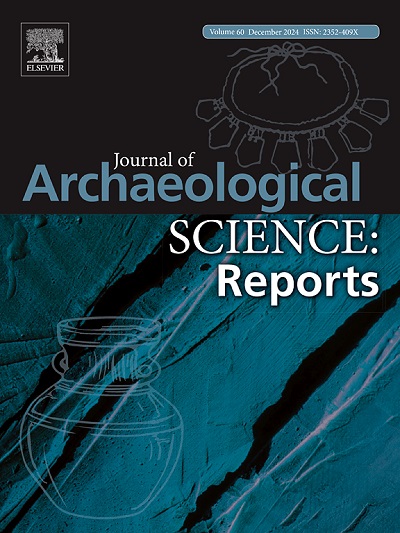Interregional interaction between the Majiayao culture and the Zongri culture on the northeastern Tibetan Plateau: New evidence from the pottery production and exchange
IF 1.5
2区 历史学
0 ARCHAEOLOGY
引用次数: 0
Abstract
The pattern of exchange and interaction between the communities represented by the Majiayao culture and the Zongri culture is one of the key issues in the Neolithic archaeological research on the northeastern Tibetan Plateau. This study utilized a combination of chemical composition analysis and petrographic analysis to investigate the raw material choice and modification of the Majiayao-style and Zongri-style pottery from the Lajia site and the Dongguotan site on the northeastern Tibetan Plateau. The results suggest that the Zongri-style pottery unearthed from the Lajia site, which is the first-ever discovery of such type of pottery through systematic excavations in the core area of the Majiayao culture, was likely imported from the core area of the Zongri culture in the Gonghe Basin. In Dongguotan, a newly excavated site in the Gonghe Basin, the Majiayao-style painted pottery might have been imported, while the Majiayao-style coarse-paste pottery was more likely to be produced in the local region. Evidence from the pottery production and exchange reveals a bidirectional influence between the lowland Majiayao and highland Zongri communities, indicating a more complex socio-economic landscape of the northeastern Tibetan Plateau during this period than previously thought. The movement of populations is one of the possible ways for the highland communities in the Gonghe Basin to participate in the exchange network with the eastern lowland communities during the late Neolithic period.
青藏高原东北部马家窑文化与宗日文化的区域间互动:来自陶器生产与交流的新证据
以马家窑文化为代表的群落与宗日文化的交流互动模式是青藏高原东北部新石器时代考古研究的重点问题之一。本研究采用化学成分分析和岩石学分析相结合的方法,对青藏高原东北部喇家遗址和东郭滩遗址的马家窑型和宗日型陶器的原料选择和改性进行了研究。喇家遗址出土的宗日式陶器,是首次在马家窑文化核心区系统发掘发现的宗日式陶器,可能来自共和盆地宗日文化核心区。在共和盆地新出土的东郭滩遗址中,马家窑式彩陶可能是进口的,而马家窑式粗糊陶则更有可能是本地生产的。陶器生产和交换的证据揭示了低地马家窑和高地宗日社区之间的双向影响,表明青藏高原东北部在这一时期的社会经济景观比以前认为的要复杂得多。人口流动是新石器时代晚期共和盆地高地群落参与与东部低地群落交流网络的可能途径之一。
本文章由计算机程序翻译,如有差异,请以英文原文为准。
求助全文
约1分钟内获得全文
求助全文
来源期刊

Journal of Archaeological Science-Reports
ARCHAEOLOGY-
CiteScore
3.10
自引率
12.50%
发文量
405
期刊介绍:
Journal of Archaeological Science: Reports is aimed at archaeologists and scientists engaged with the application of scientific techniques and methodologies to all areas of archaeology. The journal focuses on the results of the application of scientific methods to archaeological problems and debates. It will provide a forum for reviews and scientific debate of issues in scientific archaeology and their impact in the wider subject. Journal of Archaeological Science: Reports will publish papers of excellent archaeological science, with regional or wider interest. This will include case studies, reviews and short papers where an established scientific technique sheds light on archaeological questions and debates.
 求助内容:
求助内容: 应助结果提醒方式:
应助结果提醒方式:


